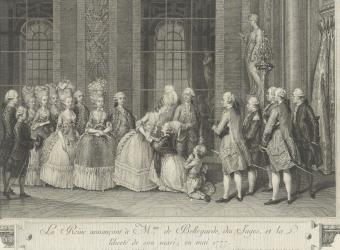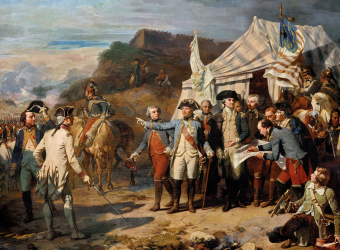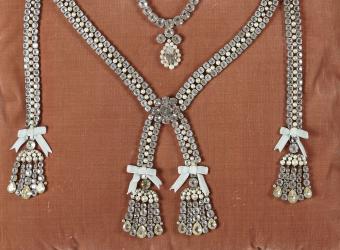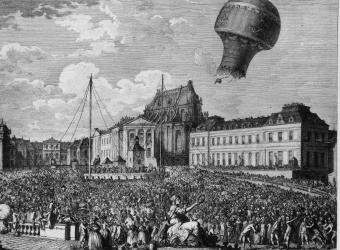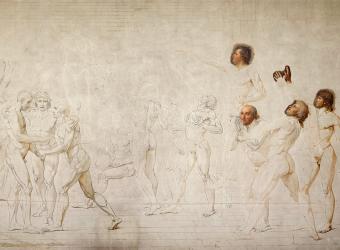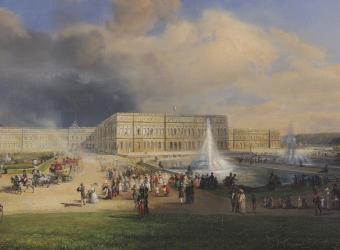The political and financial situation in France had grown rather bleak, forcing Louis XVI to summon the Estates General. This assembly was composed of three estates – the clergy, nobility and commoners – who had the power to decide on the levying of new taxes and to undertake reforms in the country. The opening of the Estates General, on 5 May 1789 in Versailles, also marked the start of the French Revolution.
Summoning of the Estates General, 1789 4-5 May 1789
On 4 May 1789 the last grand ceremony of the Ancien Régime was held in Versailles: the procession of the Estates General. From all over France, 1,200 deputies had arrived for the event. The deputies of the Third Estate (the Commoners) were the greatest in number, dressed in black with a gold and black overcoat. They were all holding a candle in their hand, except for those carrying the banners and the King’s Falconers. The king himself was wearing an overcoat of golden fabric and was surrounded by the most important Officers to the Crown. On his hat he wore the Regent Diamond, which was the largest diamond in the kingdom. The queen was wearing a gold and silver dress. The king was cheered, but not the queen. The procession started at Notre-Dame, crossed the Place d’Armes, and finished at the church of Saint-Louis, where Monseigneur de La Fare, bishop of Nancy, stood at the pulpit and gave his famous speech in which he severely rebuked the luxury of the Court. For the first time in history a bishop was applauded in a church.
ANECDOTE
Louis XVI opened the session with a speech in which he reviewed the circumstances that had led to the convocation, and what he expected from the Estates General. As a peaceful king, he declared himself “the people’s greatest friend”.
The solemn opening ceremony began on 5 May. The convocation had been sent out on 5 July the previous year, assembling the Estates General for the first time since 1614. A temporary hall with columns had been built behind the Menus-Plaisirs building on Avenue de Paris. However, contrary to the depiction in the famous engraving, the hall was very small. The king officiated from his position at the end of the hall beneath a majestic baldachin, with the queen and the princes of the blood around him. The deputies were seated in rows around the edge. The members of the Third Estate and a few of the Clergy and the Nobility would later constitute the first National Assembly.
Louis XVI opened the session with a speech in which he reviewed the circumstances that had led to the convocation, and what he expected from the Estates General. As a peaceful king, he declared himself “the people’s greatest friend”. This was followed by speeches by Barentin, the Keeper of the Seals, and Necker, the Minister of Finances, concerning the economic situation in the kingdom. The budget deficit was 56 million. Necker claimed that new taxes would be enough to make up for the deficit, but the Commoners, who were only too aware of the country’s expectations, were dissatisfied with such a mediocre discourse, and decided to take things into their own hands. The Revolution had begun…


